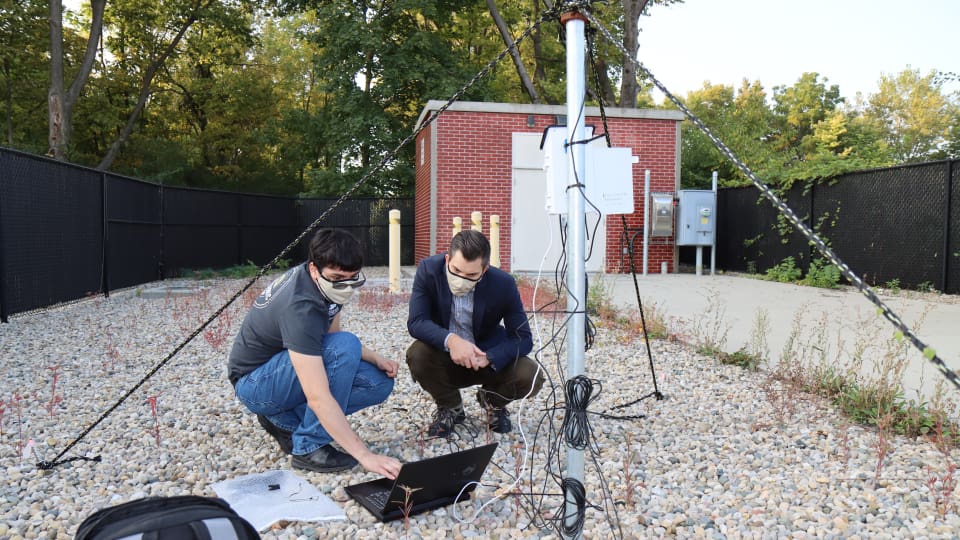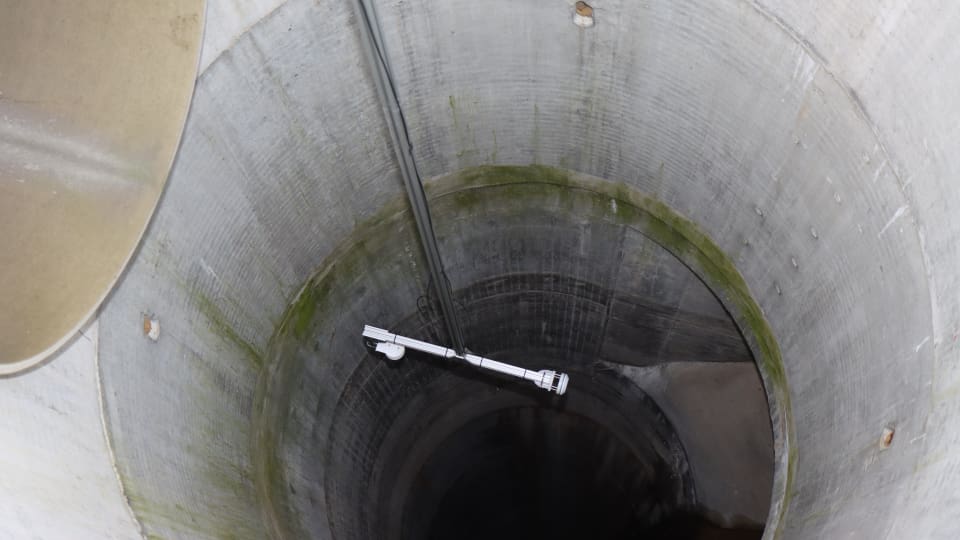
A utility company in Indianapolis turned to a research team in Purdue University’s Polytechnic Institute to help its underground sewage storage system pass the smell test.
Century-old underground sewer systems that carry both rainwater and sewage to treatment plants can reach capacity with as little as a quarter inch of rain, causing what’s known as combined sewage overflow (CSO) to discharge into waterways without being treated. To mitigate this health and environmental risk, Citizens Energy Group is building the DigIndy Tunnel System, a 28-mile network of 18-foot diameter storage tunnels 250 feet below Indianapolis. The system is designed to nearly eliminate CSO during heavy storms.
As untreated water fills the storage tunnels, displaced air is pushed out through ground-level ventilation shafts around the city. But where there’s sewage in the water, there could be odor in the air. Although the company’s first wastewater treatment plant was built in 1924, Citizens is comparatively new to dealing with foul-smelling air that could affect people who live or play near where those tunnels breathe.
Recreating the DigIndy tunnels digitally
In fall 2019, Jason Ostanek, assistant professor of engineering technology and director of Purdue’s Applied Thermofluids Laboratory, and Luis Maldonado, a graduate research assistant, began designing a system that will provide Citizens a method for predicting the direction and magnitude of air circulation within the tunnel system under different seasonal and environmental conditions. This “underground DigIndy weather forecast” is intended to help Citizens understand and mitigate risk of odor problems near ventilation points in residential and recreational areas.
Ostanek and Maldonado began by developing a two-part “digital twin model” of the DigIndy system: a computer-aided design (CAD) model and a computational fluid dynamics (CFD) model.
First, they extracted dimensional information for the DigIndy system’s tunnels and shafts from engineering drawings and created a geometric CAD model of the network. Next, they created a CFD model to mathematically represent air flow within the system and provide tools for predicting the flow rate and direction of air as it circulates inside the tunnels.
Validating their digital twin model required rigging sensors inside DigIndy’s ventilation shafts. But this posed both logistical and environmental challenges they didn’t expect.
To collect real-world data from the tunnel network, Ostanek and Maldonado initially wanted to place sensors 100 feet down the ventilation shafts, close to halfway from ground level to the tunnels, and to wirelessly transmit sensor data to above-ground receivers.

“We went through a lot of different designs,” Maldonado said. “Locating sensors that deeply in the shafts would have required cranes for installation, a very expensive process. So we came up with a simpler design that still preserved stability in the sensors.”
They chose commercially available weather stations that precisely measure temperature, pressure, humidity, and air flow velocity, among other data, and installed these ground-level stations adjacent to the shafts. That was half of the solution.
“We had to design a mounting system for each station’s sensors, and we did our own engineering work,” said Ostanek. “We built a rigid aluminum framing system that connects at surface level to hold sensors 20 feet down. Luis created the design and did a fantastic job with Citizens to make sure it would work.”
Sensors hanging in the shafts are wired to the ground-level weather stations, each connected to batteries and a cellular transmitter to upload live data to the cloud. Maldonado checks the data remotely every day, monitoring current conditions and watching for problems.
Comparing predicted conditions with reality
Validating their digital twin model using their real-world data has provided its own challenges.
“We input data from our surface weather stations into our CFD model,” explained Ostanek. “We let the model run its course and output what it thinks is happening underground, and then we check to see if the CFD model’s data agrees with data from sensors in the vertical shafts. We knew that environmental factors such as atmospheric pressure and temperature would affect the flow in the tunnel, but going into this project we weren’t sure which factors are the most important. The model is helping us understand the sensitivity of airflow in the tunnel to these different environmental factors. It’s definitely a challenging problem, but we feel confident that our CFD model will provide Citizens with the tools they need to predict the flow rate and direction of air in the system.”
Ideally, Citizens will gain enough understanding of risks associated with undesirable air circulation patterns to control and prevent odors at DigIndy’s ventilation points.
“One example of a mitigation would be to close off or open up new ventilation points,” Ostanek said. “Or, in the extreme, the design of a tunnel could be modified. The tunnel system is currently under construction, and there is still a possibility that Citizens could modify the design of the remaining, unbuilt segments if they determine there is a risk to odor control.”
The project is the main topic for Maldonado’s master’s thesis. In addition to studying whether they can predict airflow using CFD models and weather stations, he will examine how completion of additional DigIndy tunnel segments affects airflow. Maldonado will also study seasonal effects on the data, and he’s looking forward to examining data from their sensor system’s first winter.
Ostanek plans to publish their methodology, hoping it could help other cities mitigate odor risks at their dig sites.
“Some of the broad results we’re finding, like the importance of surface pressure,” he said, “could put them a step ahead.”
Additional information
- Engineering Technology researchers creating digital model of DigIndy sewage tunnels to “clear the air”
- DigIndy (Citizens Energy Group)
- Partnership for Excellence in Research & Learning (PERL) (Citizens Energy Group)
- Applied Thermofluids Laboratory (Purdue Polytechnic)
